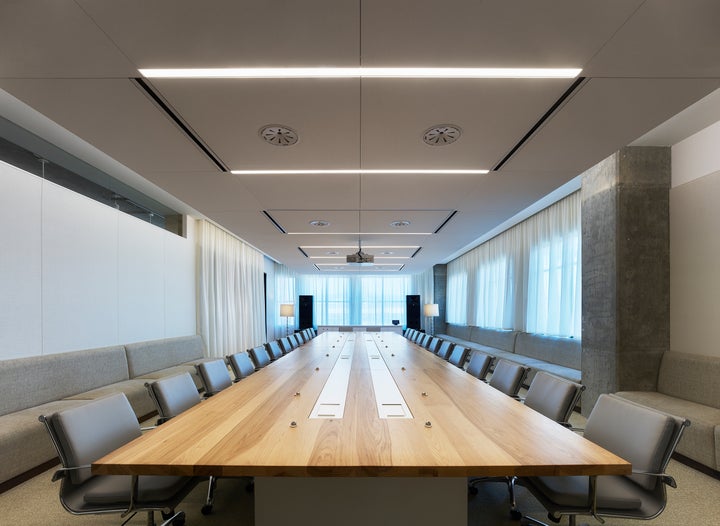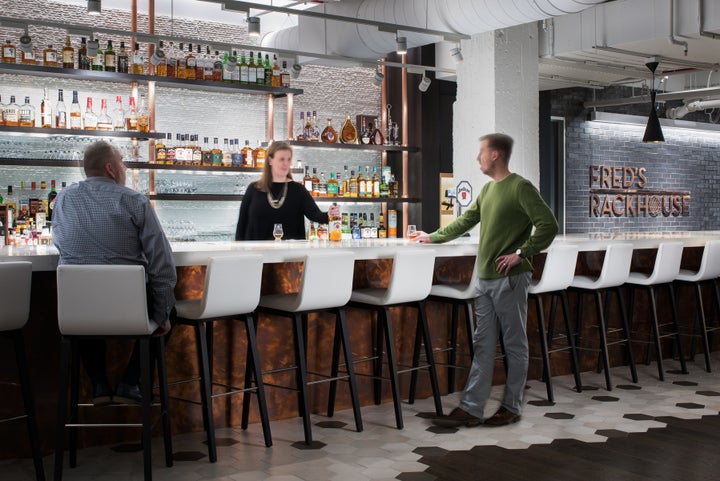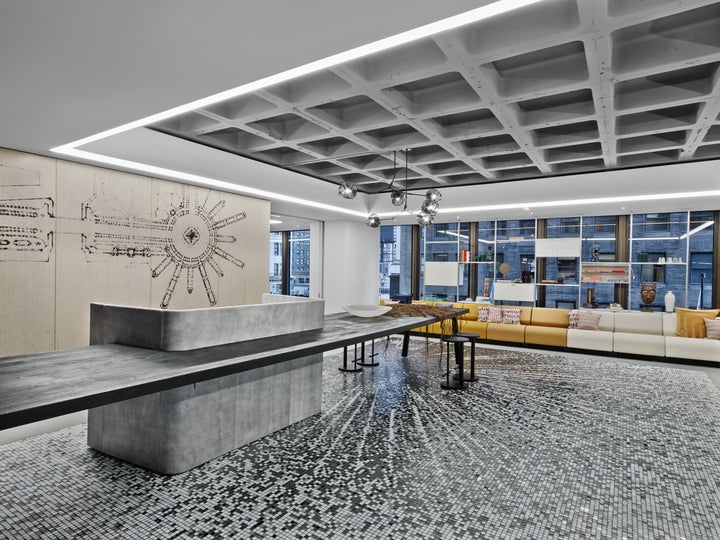By definition, the contract furniture industry embodies a certain level of customization. Making the statement that customization is on the rise is a bit of an oxymoron, then, isn't it? Not exactly. The latest IBIS World Report on Office Furniture Manufacturing in the US states boldly on the cover, “Customization will provide room to grow amid import competition.” It’s becoming apparent that customization isn't only on the rise, but also is ready to stick around. Here's why.
The definition of custom is changing.
In a recent conversation with Anne Gibson, IIDA, LEED AP, Principal and Design Director for Gensler in Chicago, she shed insight into how the term customization has evolved. "Ten years ago, ‘custom’ meant altering a standard product – asking for a new finish, modifying dimensions, or specifying a COM," explains Gibson. "This kind of ‘custom’ was a small percentage of my work. Today, that level of alteration is the norm for every standard product and I am routinely using an obscure upholstery on a lounge chair with custom-trimmed throw pillows. And, now, a sizable percentage of the pieces I specify are entirely unique."
Whereas customization used to refer to specifying an alteration here or a finish there, today, customization takes on a whole new definition, as designers look to create spaces that are unique and inspiring, and turn to custom furniture pieces to secure that one-of-a-kind space that truly speaks to its occupants. Zac Feltoon, Industrial Designer at Teknion, put it perfectly, "In the end, we can have a product that is 90 percent custom, 10 percent standard, or a piece that is 10 percent custom, 90 percent standard. No matter where we land on that spectrum, the piece has an emotional connection."

Interscope Records, Santa Monica, CA
New design trends are driving demand.
As the move toward resimercial design – or adding the residential look to a commercial space – becomes the new normal, customization requests are taking on unique new angles. Work has transitioned from a place we go to a thing we do, and as such, the workplace is shifting to accommodate a more livable environment that pairs the comforts of home with the ability to get work done.
For example, employers are starting to embrace the value of outdoor workplaces, and office spaces are transitioning to accommodate for trends like co-working and shared office space among telecommuters. These trends naturally drive furniture design to a more customized approach that evoke a home-like feel, as commercial spaces crave design that pulls from its environment and the needs of its unique employee base. As Gibson explains, "Pairing an employee’s drive in connecting with their employer on a human level, the organization itself can, and should, connect to its local community. Finding products that reflect the surrounding neighborhoods and influences can reinforce a commitment to local businesses. I often go to small furniture makers – on the quest for one-of-a-kind pieces, or I am scouting vintage shops for something unique – to give it a second life with a new upholstery, or, sometimes, I am collaborating with a millworker to create something completely custom that reflects the client’s distinct functional needs and purpose."

Fred’s Rackhouse Bar, Beam Suntory Global Headquarters, Chicago
Technology has simplified the customization process.
From both a timeline and cost perspective, customization has been more efficient, due largely to the use of technology. Feltoon elaborates on this trend, "The design tools that we have allow us to design in real time. The timeframe for manufacturing has also decreased. We are able to do toolless manufacturing and 3D printing, even in final materials, which allows us to think differently about the scale. Value and the future of any given item is the ability to personalize, and people are becoming more comfortable with the idea of trusting the experts and our history as a company to deliver."

Custom Reception Desk, IIDA Headquarters, Chicago
Smaller spaces means furniture must multi-task.
Today, people are doing more with less - in every sense of the term. Office spaces are getting smaller as companies allow more work-from-home employees and therefore need less space. And with smaller spaces, furniture has to work even harder. The expectation is that today those pieces have to be multi-functional and customized not just to the needs of the worker, but to the increasingly-efficient space that it needs to work within.
Scott Delano, AIA, IIDA, Design Director, Wright Heerema Architects elaborates on this trend, “Clients today have an expectation that each piece of furniture is multi-functional, and that it can be made to adapt to their ever-changing needs. The furniture has to work even harder to serve the workers’ needs today and tomorrow, but must also be a good fit in increasingly efficient workspaces.”
While the definition of customization may mean different things to different industries, custom design in the contract furniture industry is here to stay. Expect to see exciting new designs that challenge our traditional approaches and embrace the changing environments where we work. Suffice to say, the future of customization looks bright.
Gibson leaves us with this inspiring prediction on emerging trends in customization: "I believe the desire for distinctiveness will continue to quickly evolve. Original furniture that is reflective of a company’s purpose will continue to permeate deeper into the spaces we create. I think it’s interesting that today we are specifying product that is for the initial installation, in one location. In the near future I think product will be evolutionary itself – having the ability to adapt to new users and changing environments and functions. This could be achieved through technology or new manufacturing methods and will certainly be informed by our changing tech tools."
This article originally published in The Business of Furniture, a division of Bellow Press, on December 20, 2017. It is republished here with permission.
About the author: Amanda Schneider, LEED AP is a researcher, blogger for the Huffington Post, and the founder of Contract Consulting Group www.contractconsultinggroup.com, a research led strategy firm serving the contract interiors market.